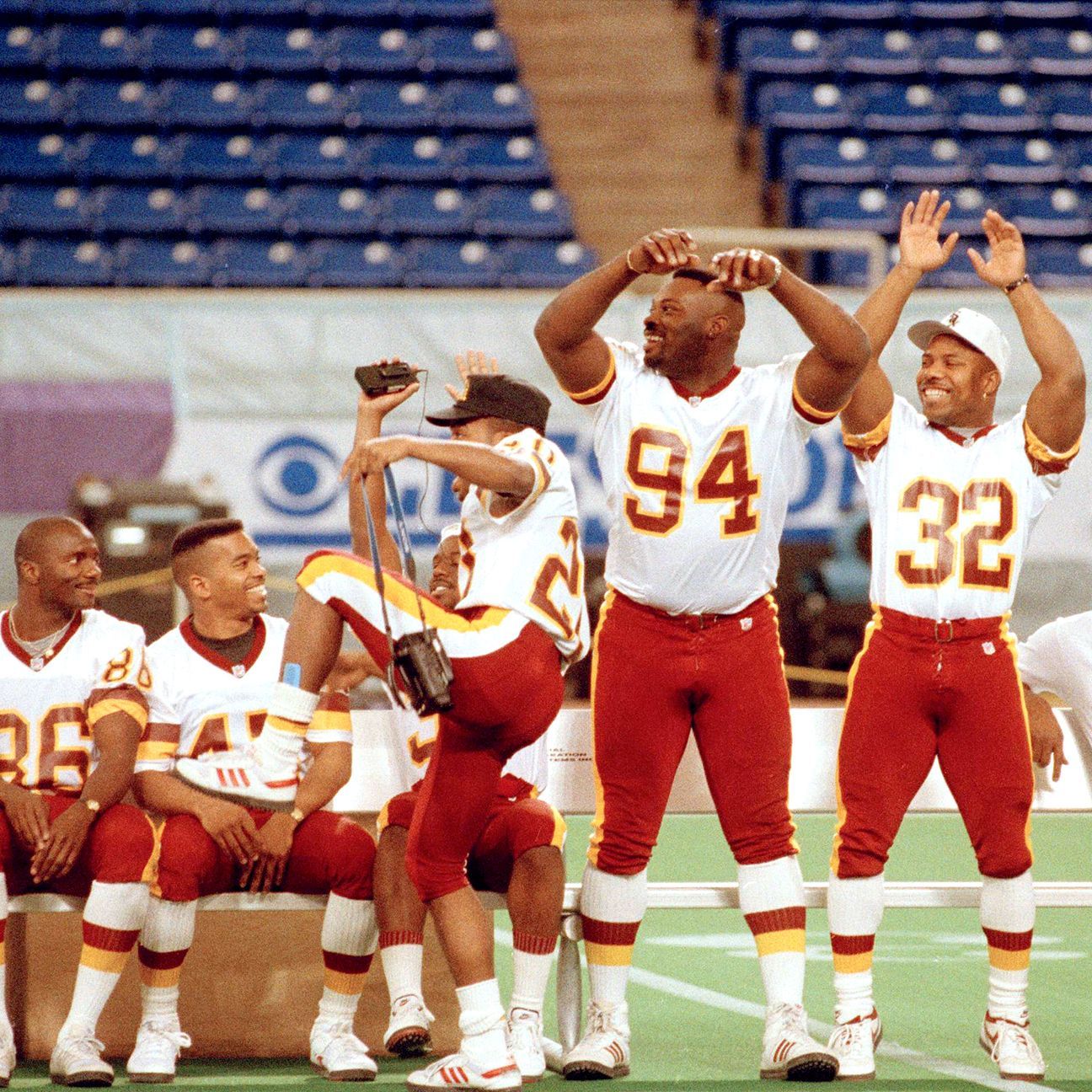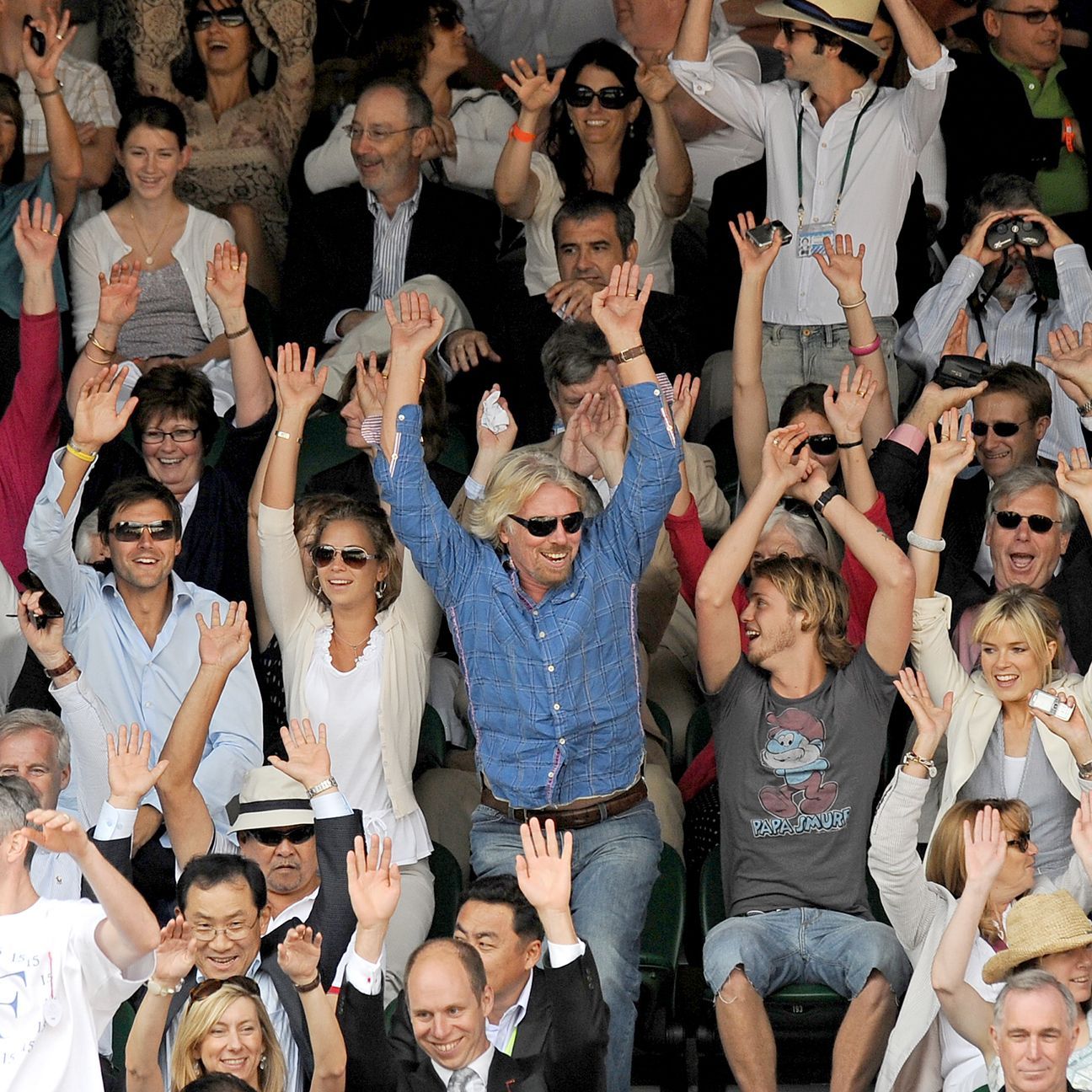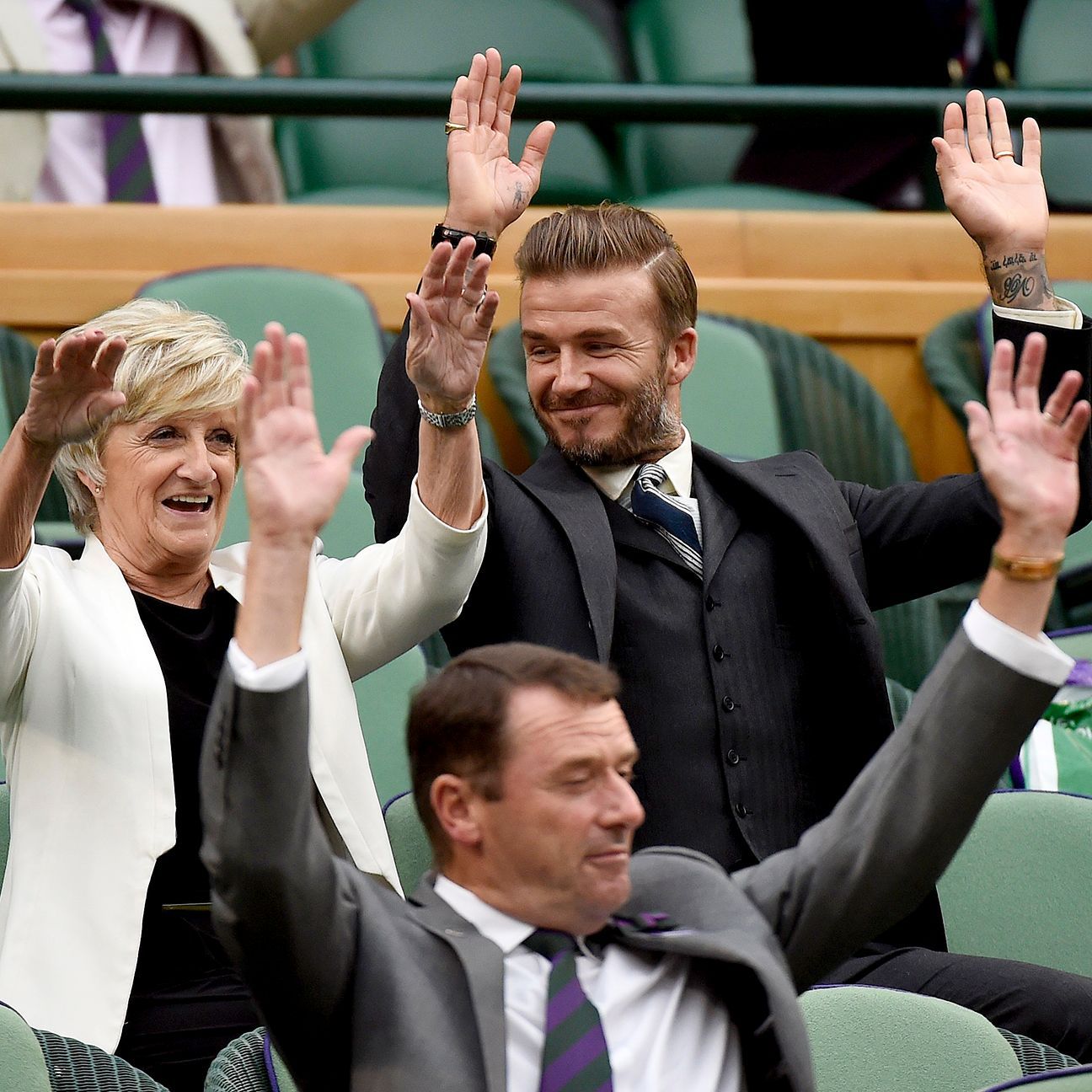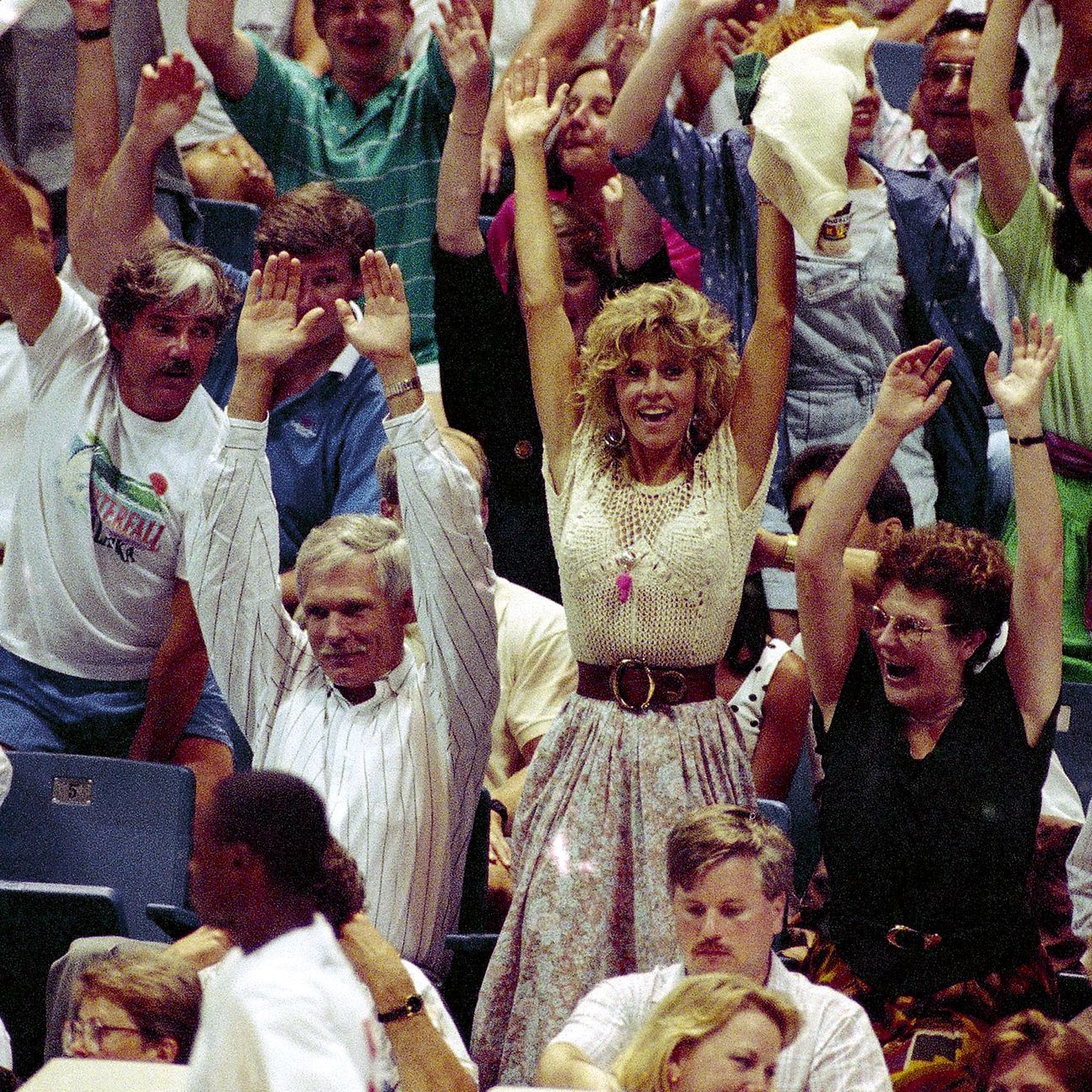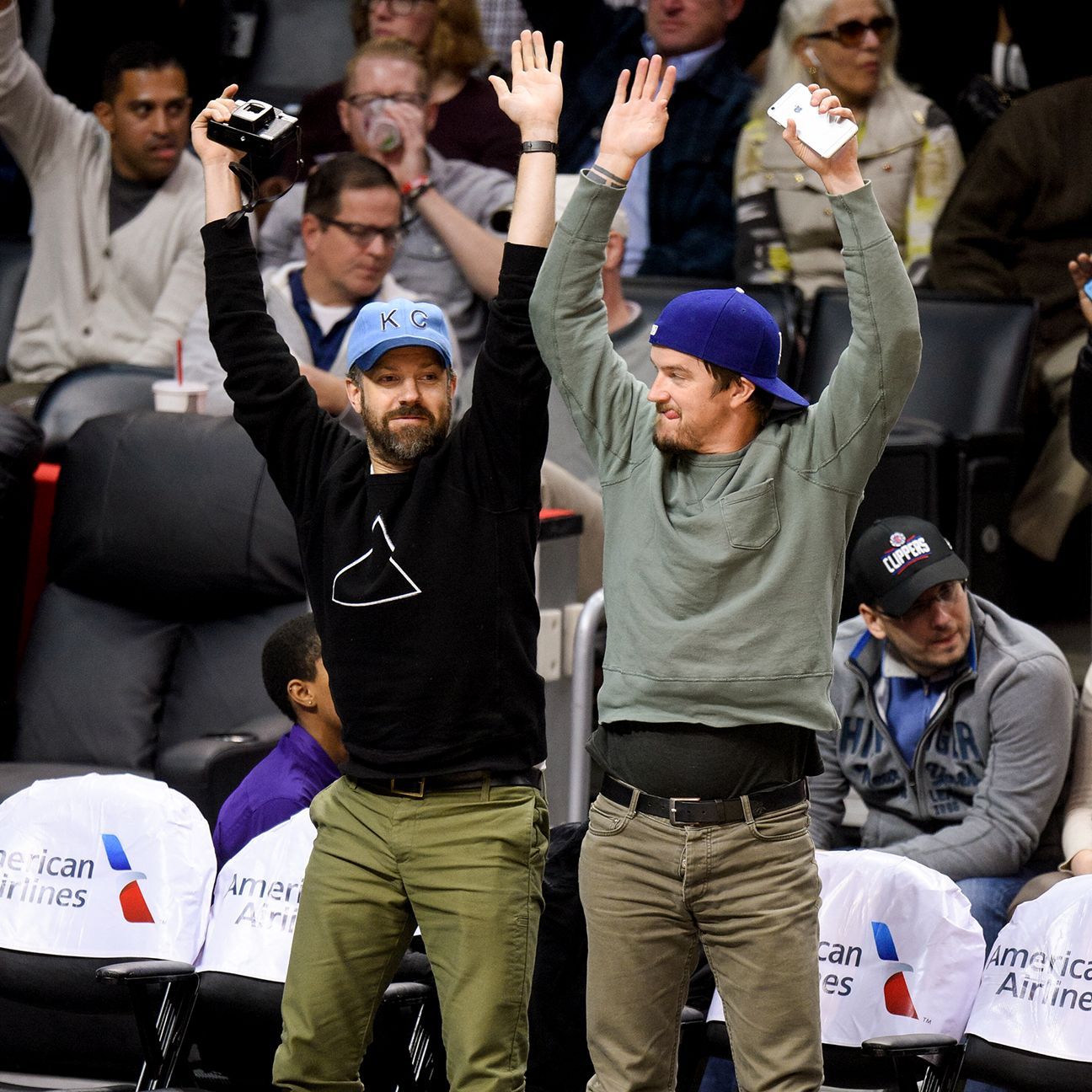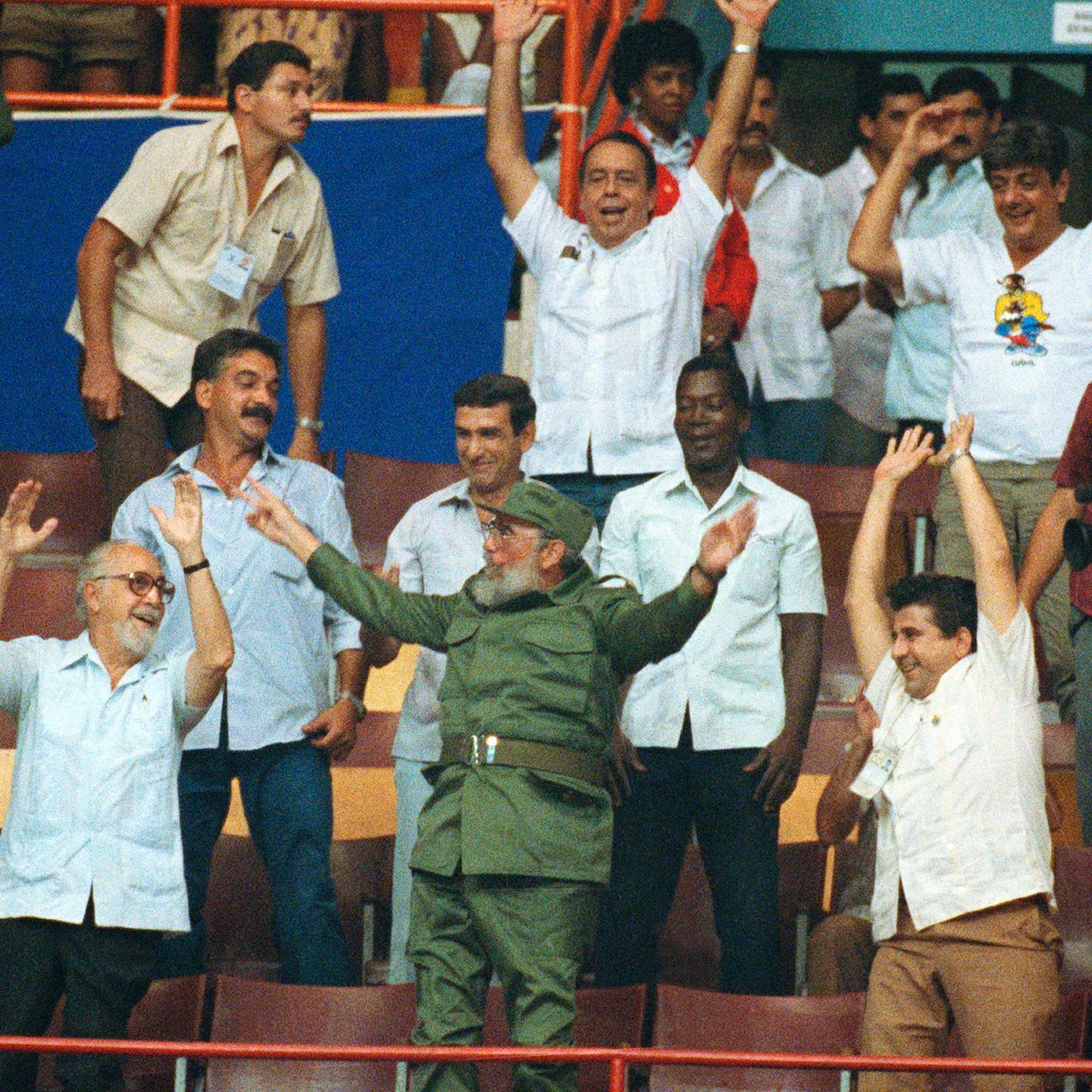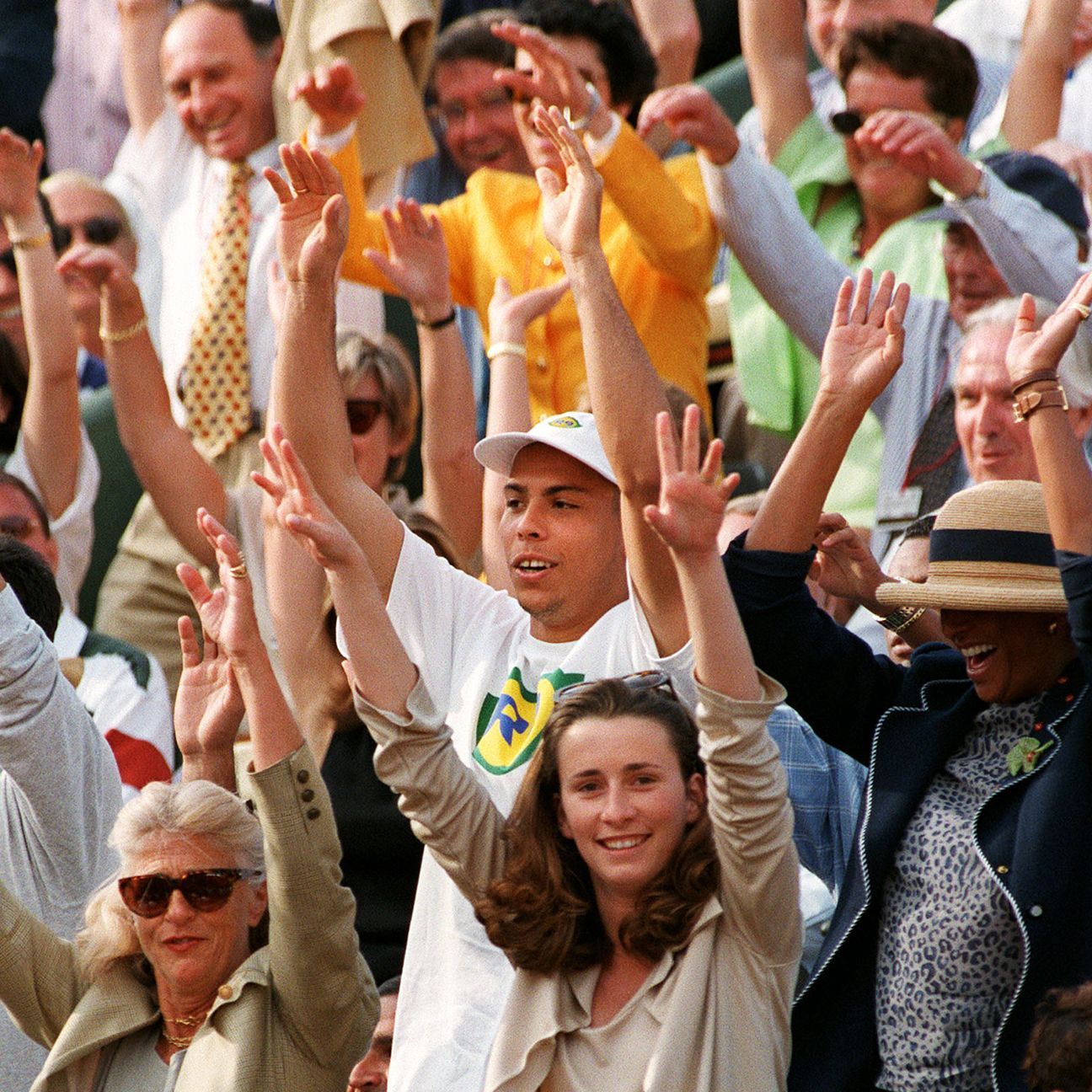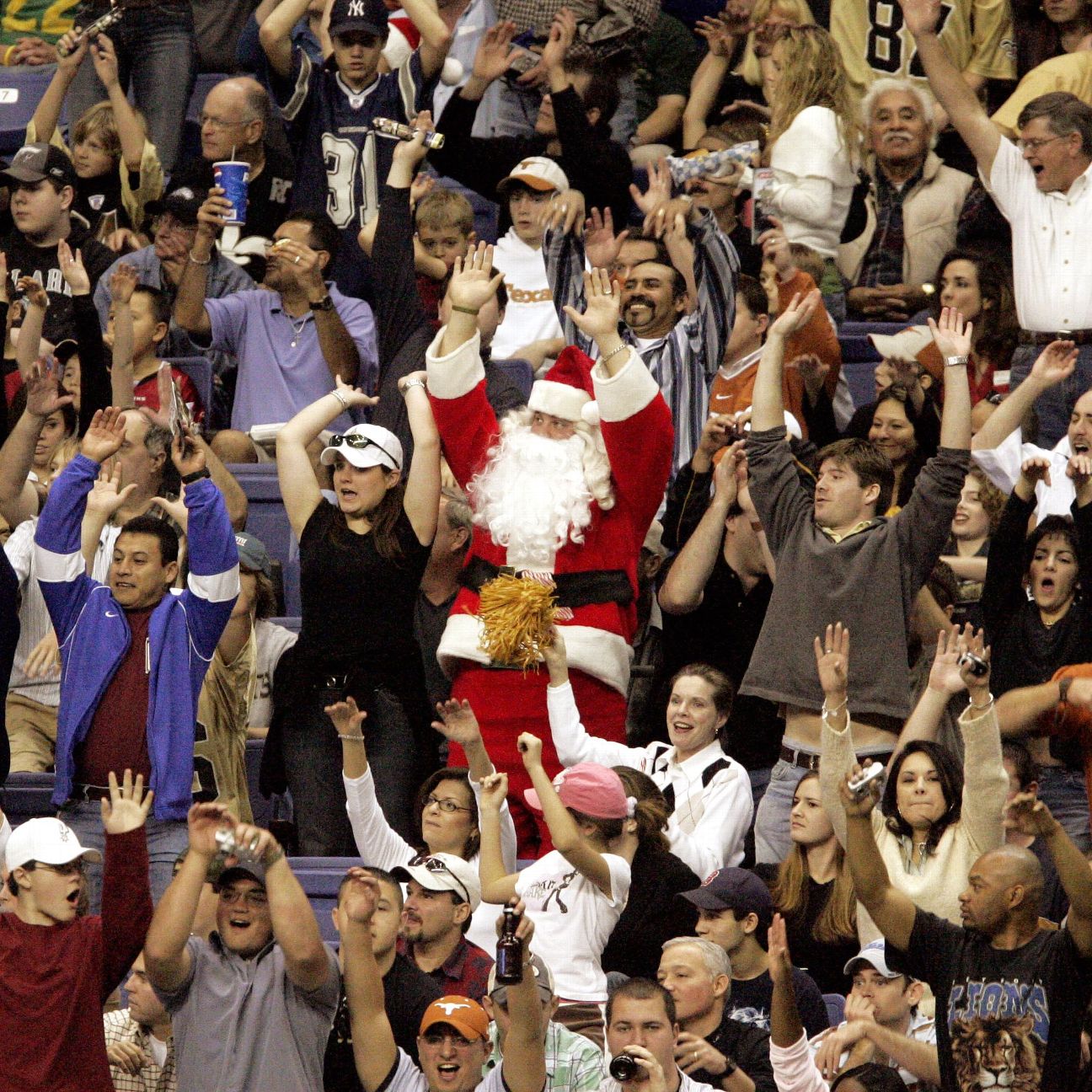
Please Remain Seated
To some, the wave is a celebration. To me, it was a scourge -- until I tried to start one myself.
She was not only a baseball fan; she was a purist. She was not only a purist; she had power. She was not only powerful; she put people in jail, and she had just thrown the ceremonial first pitch. She was Mary Jo White, the chair of the U.S. Securities and Exchange Commission, and she represented my last, best chance to start the wave.
I was at Nationals Park in Washington, D.C., for a Tuesday night game between the first-place Nationals and the second-place Mets. It was SEC bonding night, so they had me surrounded: rule makers, not rule breakers; sticklers, by the hundreds. But there was an empty seat next to White, so I approached, my court of last resort. I didn't sit; instead, I knelt before her and, after introducing myself, went right into my plea.
"Ms. White," I said. "This is the second stadium I've come to trying to start the wave. I won't have another chance. Would you help me?"
She had not responded with wariness or alarm when I knelt. She smiled. She was still smiling. She never stopped smiling. A tiny woman wearing a red baseball cap and a black polo shirt, both emblazoned with the insignia of the SEC, she heard me out, smiling, then answered, "I hate the wave."
"I hate the wave too!" I exclaimed. "That's why I have to start it! I'm doomed to start it, condemned to start it!"
She cut me off before I started reciting The Rime of the Ancient Mariner.
"The wave has nothing to do with baseball," she said.
"But tonight it does! Noah Syndergaard is on the mound. He hates the wave more than we do. If we do the wave while he's pitching, it'll be part of the game."
She considered this. Her smile looked as if it might have pained her.
"I'll do it," she said.
"You'll do it?"
"I'll do it. When?"
"Fifth inning? When Syndergaard is pitching? One out? When the game has reached its desultory second act?"
She nodded conclusively, the veteran of many an executive decision. "Yes. Because that's when people do the wave -- when they're bored."
"I'll see you then."
"I'll be here," she said. "But I have to tell you something."
"What?"
"I still hate the wave."
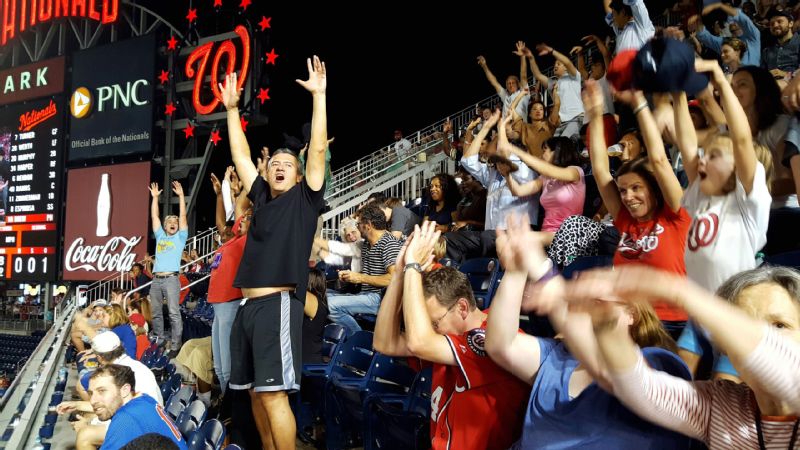
"One, two, three, Whoa!" Our writer (in light blue) urges on the fans at Nationals Park in Washington, D.C. Jim Blair
I HATE THE wave. I've always hated it, even when I -- and it -- was young and it was a novelty, not a tired obligation. Technically, it exemplifies an aspect of crowd dynamics called a metachronal rhythm; but I used to call it the Chain Letter of Baseball, back when chain letters were made of paper. The forerunner of virality, the precursor to the Twitter mob, the unwelcome intrusion that somehow found success in the sports arena, the wave is nothing more than a yawn dressed up for a party. In clockwise laps, people stand, people yell, people lift their arms and then sit down; they think they are celebrating, when really all they're celebrating is their own discontent. Insufficiently entertained, they amuse themselves, stealing the game from those who want to watch it, turning a grumbling undercurrent into a roaring contagion.
And that isn't even the bad part.
We all know how waves are started -- with a bored bully, making people feel like spoilsports if they don't do his bidding. But nothing is worse than how they end. At least when they begin, they begin with a perverse sense of hope: Maybe this one, this one, is the wave that will take wing. But nobody can say exactly how they end because they don't exactly end; they just peter out. They fail the way so much human endeavor ends, with a shrug and a vague sense of shame and sorrow. When people start waves, they are saying they don't care about the game; when they end them, they're saying they don't even care about the wave.
I have always ended the wave. I have always been the one to sit when others stood, to sneer when others smiled. But of course that meant I didn't understand the wave at all, and never would, until I took it upon myself to go to a stadium and start one.
THE WAVE IS supposed to have been invented in 1981 by a professional tummler who wears cutoffs and calls himself Krazy George Henderson. Since then, social scientists and physicists have suggested that a minimum of 25 like-minded individuals is necessary to turn the tide of human lassitude and put the wave into motion. I could not find that many people when I went to Turner Field in Atlanta on a recent Sunday afternoon, so I brought my daughter, 13 and mortified. The Braves were in last place, a largely anonymous team playing the still-contending Mets in front of a clumpy crowd composed mostly of "Let's go Mets!" fans. On the outfield wall was a sign with the Braves' own magic number: 13 (games to go before 20-year-old Turner Field was no longer a baseball stadium). I began selling right away to the spectators around us.
"Hey, you want to start the wave in the fifth inning? You in? You in?"
I was surprised by how many people said yes -- by how many actually smiled and seemed excited by the prospect of doing the wave. "Sure! Definitely! We're in!" I was even more surprised that no one told me to go to hell. I had at first aimed my pitch at families with children and the few pockets of stalwart Braves fans, figuring they would be desperate for entertainment, but there were not enough of them, so I decided to risk the wrath of the fans in blue and orange. Strangely, there was no wrath; those who didn't announce themselves "in" didn't declare themselves "out" either. They just stared at me, then went back to rooting for the road team.
In the bottom of the fifth, I stood. It was an odd feeling because I had often stood up at ballgames but never to do what I was about to do next, which was give a speech. "Hello, everybody!" I declaimed. "Whatever you think of the wave, this is probably your last chance to do the wave at Turner Field! Your last chance! Are you in?"
A few people muttered that they were.
"Then let's go!"
I sat back down, and as loudly as I could, I counted off. "One ... two ... three ... "
Then I stood, raising my arms and shouting "Whoa!" It felt like a dream, one in which I wore no pants, but there I was, trying to start the wave, and there they were, the scattered souls following my lead. I couldn't stop, I couldn't turn back, I couldn't look down on the wave, as I always had. I was the wave, so I stood like a vendor, but instead of "Cotton candy!" or "Beer here!" I kept exclaiming "Last chance to do the wave at Turner Field!" before sitting down, counting to three and standing up with my hands wriggling in the air. I repeated the process at least seven times, sweating profusely, working so hard I felt I should have been shouting "Heave ... ho! ... Heave ... ho!" But the wave is a vast language of only one word, so I stayed with "Whoa!" and watched the wave -- my wave -- start in Section 120, where I sat with my daughter ... then die in Section 122 and a half.
What was it like to see something I started come to an ignominious end? It was like everything -- the end of a cause, the end of a movement, the end of a friendship, the end of love. I sat and began telling the man behind me about the time I busked in the New York subways and how doing the wave was more difficult. Then my 13-year-old asked, "Dad, are you going to tell him about every embarrassing episode in your life?"
"Should I be embarrassed?" I asked.
A shrug -- the apotheosis of teenage gesture.
"Were you embarrassed?" I asked.
"I didn't stand," she said.
"You didn't stand?" I was working so hard to start the wave I hadn't noticed that my own daughter had declined to follow. I mulled my own mortification for a while, until it was time for the seventh-inning stretch. I hesitated to stand; I didn't want to go through that again. But a boy behind me bid me to rise. He was looking right at me, nodding, as if giving me permission. He couldn't have been more than 3, but he knew what kind of guy I was, and suddenly so did I. I wound up singing "Take Me Out to the Ball Game" at the top of my lungs, and he not only nodded again but gave me a thumbs-up. I decided right there that I had to give the wave one more try, with Syndergaard on the hill.
Doug Pensinger/Getty Images
ON THE DAY I tried starting the wave in Atlanta, Syndergaard happened to have tweeted about the subject. This was not unusual. Syndergaard does not like the wave; he is known for not liking the wave, a stance that -- given the wave's 35-year existence -- seems at once quixotic and hopelessly old-fashioned. Nonetheless, he rails against it whenever he can. That day he tweeted three times and used a #banthewave hashtag, getting nearly 7,000 likes and 3,300 retweets for the last and best of them: "After more research, Children who do the wave are 5X more likely to drop out of school. It's on the web, must be true. Save the children!"
Now it was two days later, and here he was, pitching in the bottom of the fifth, ahead 3-1, and there I was, approaching Mary Jo White again to cash in on her promise. At the top of the inning, I had heard a rumor spreading in my section, and it turned out to be a rumor of my own devising: "The wave is on." One of the chair's personal assistants was working the crowd, walking up and down the aisles, making sure the compliance inspectors and forensic accountants in attendance knew to stand and lift their arms when their boss did.
Once again, I knelt before Mary Jo White. "Are you ready?"
She nodded. "It's the bottom of the fifth."
"I have to tell you something about the wave," I said. "First, it's hard work -- like rowing in the Roman galley in Ben-Hur. Second, if it dies, a part of you dies, just a little. You'll never forget it."
"I don't want to be under that kind of pressure," she said, but even then her smile never slackened, and when I went about 10 seats counterclockwise and began selling the wave to those around me, I figured I had something to sell besides myself. Not only would Mary Jo White do the wave, the wave would distract Syndergaard. The wave would help the Nationals win the game! "Come on, everybody," I heard myself saying, "let's all say hello to Noah ... "
And then I counted out loud and did the wave. So did about 100 people near me. So did Mary Jo White, sort of. She raised her arms, and she repeated the magic syllable, "Whoa!" But she didn't stand. She didn't stand, and I'm not sure whether she smiled. So I tried again. "One, two, three ... " I tried seven times and at one point saw nearly every SEC employee doing a wave that spread across the arc of the upper deck until it hit a gap in the design of Nationals Park -- a sort of built-in seawall -- and died. When it did not cross over, it didn't go anywhere, and when it didn't go anywhere ... well, the wave feeds on nothing but its own momentum and shrivels at the first hint of stasis. As in all aspects of life, you can tell without a scorecard when stasis is winning.
I will tell you what I learned from all this: Purity is overrated. I used to be among the purists, satisfied to sit when others stood. But now that I was trying to persuade them to stand, I saw the purists for what they were -- smug and hidebound -- and cast my lot with those who came to the park looking for an excuse, any excuse, to celebrate. These were now my people, the closest complete strangers could come to being friends. "One! Two! Three!" I kept trying, but by the end Mary Jo White not only didn't stand, she didn't raise her arms, and I happened to catch the eye of a man sitting a few rows behind me. He shook his head slightly, with the solicitude of an executioner. Admit defeat, his kindly face said. I looked around. I was one of a handful of people standing, gesticulating, vainly orchestrating. When I glanced back up at him, he shook his head again, the barest motion, and I sat down.
Later, I approached White. She was smiling. As we had conspired to start the wave, Syndergaard had given up a leadoff double. Then, as our wave lived and died, he struck out the side. Order had been restored; the moral arc of the universe had asserted itself.
"You know, it's a pretty good game," she said.
"The wave doesn't care if it's a good game," I said. I wanted to sound philosophical. But I knew I sounded huffy.
"Yes," the chair of the U.S. Securities and Exchange Commission said. "And that's what I hate about the wave."



of

